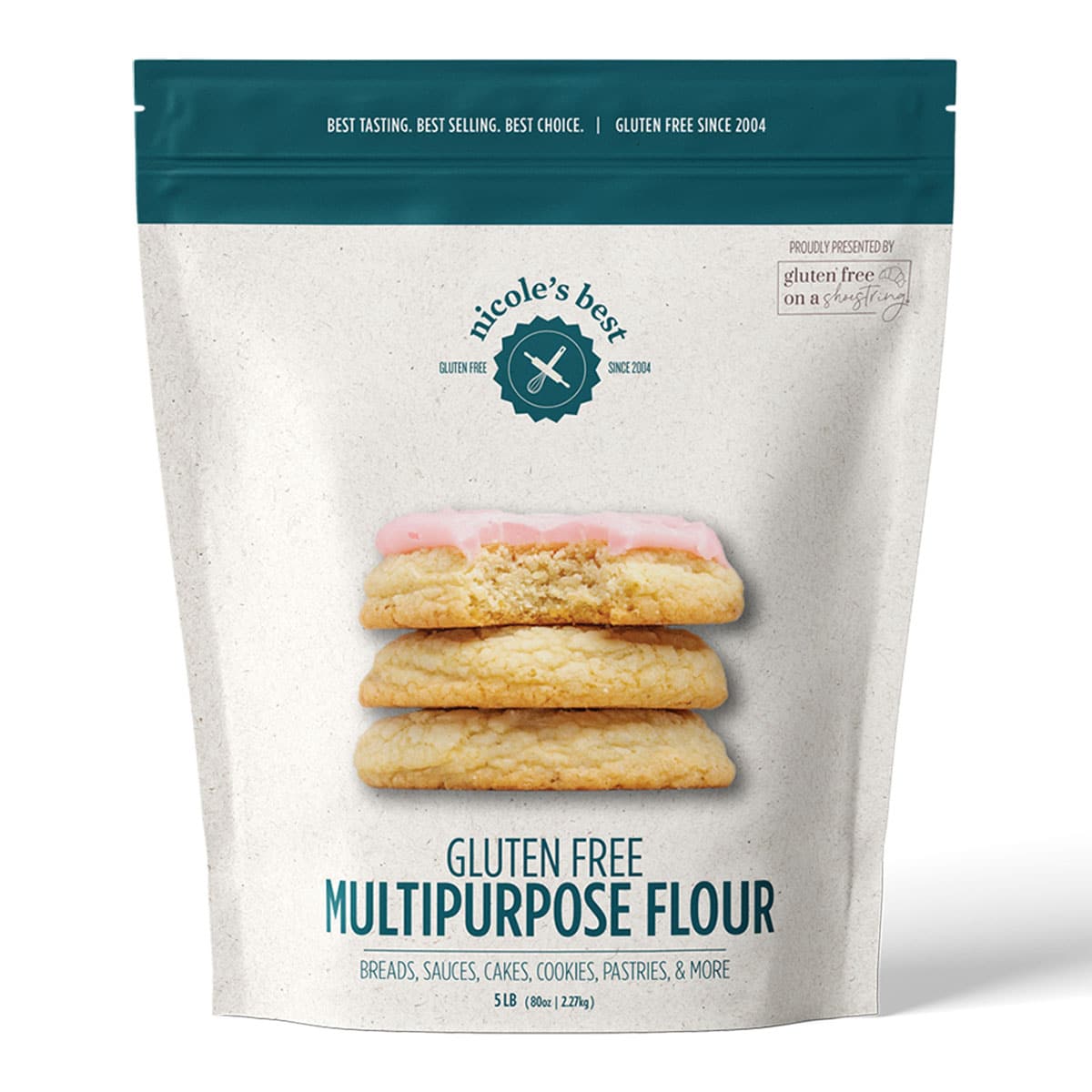If you want to bake gluten free and get real results, not just “good for gluten free”, you need the right flour blend. No single gluten free flour can replace wheat flour, but a well-balanced blend can.
With the right blend and the right gluten free recipe, you can bake anything that you used to bake with gluten.
You can either:
- Buy a high-quality blend (but not all store-bought mixes are created equal), or
- Make your own with one of my tested “mock” blends that copy some of the best commercial ones.
I’ve been baking gluten free since 2004, and I’ll walk you through exactly what to buy, what to avoid, and how to build your own blend—step by step.
This post contains affiliate links. Please read our disclosure policy.

Table of Contents
The best store-bought gf flour blends
If you don’t want to make your own blend from scratch, there are a couple of packaged all purpose gluten free flour blends that I trust completely, and use myself. These are the ones I recommend in all of my recipes.
Nicole’s Best Multipurpose and Better Batter’s original blend are reliable, well-balanced, and made with high-quality ingredients. If you’re looking for a sure thing, start with one of these.
Two others (Bob’s Red Mill 1-to-1 (blue bag) and King Arthur Gluten Free Bread Flour) earn honorable mention with a few caveats.
⚠️ Other blends may look similar, but many are gritty, too starchy, or just don’t bake well. I’ll explain which ones to avoid—and why.
- ⭐️ Nicole’s Best Multipurpose Gluten Free Flour
My own blend—made to my exact specifications. This is the flour I bake with every day, and it performs beautifully in everything from cookies and muffins to pastry, pancakes, sauces, and even bread.
It’s made with premium ingredients, has no xanthan gum, and is ideal for both sweet and savory recipes. If you only order one blend, make it this one.
- 👍🏻 Better Batter Original All Purpose Blend
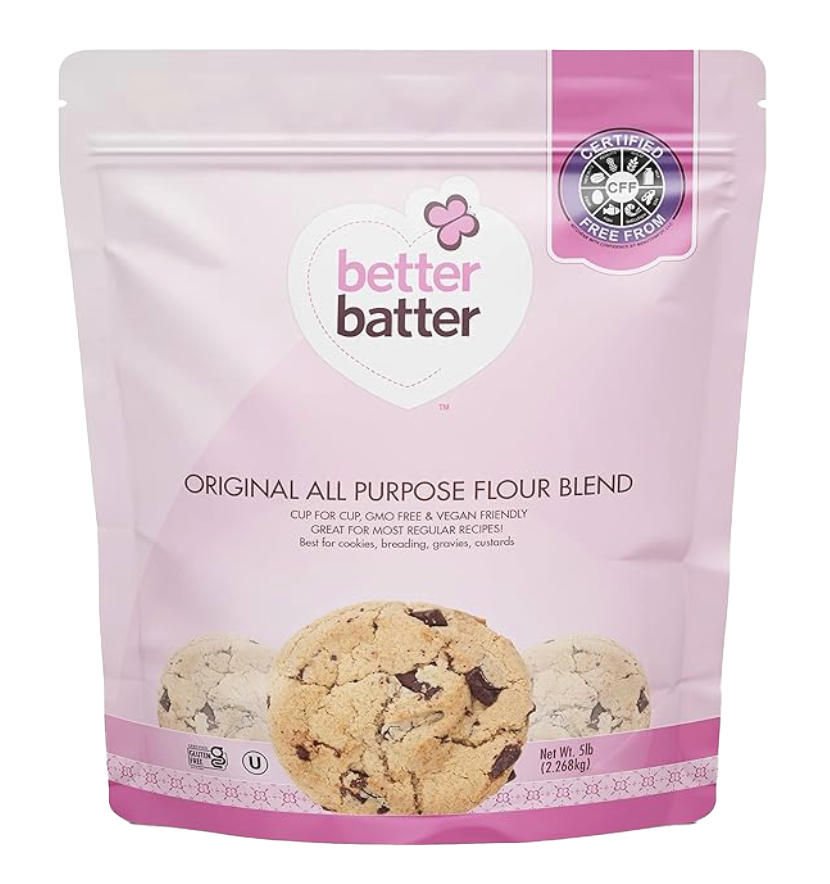
Better Batter’s original blend is my longtime go-to, and it still works in all of my recipes that call for an “all purpose gluten free flour.” It has a bit more structure than Nicole’s Best, which makes it especially great for rolled cookies, muffins, and layer cakes.
Just be sure to purchase the original blend—not the “Artisan” version (which I don’t recommend).
- Bob’s Red Mill Gluten Free 1-to-1 Baking Flour
Bob’s Red Mill’s blend in the blue bag has improved a lot over the years, and the rice flour it contains is now much less gritty than before. It performs reasonably well in most recipes, but not without some adjustments. It contains too little xanthan gum, so baked goods often turn out crumbly. To compensate, add at least ⅛ teaspoon xanthan gum per cup of flour, and considerably more for yeast breads. And I still would recommend against it for yeast breads, as it just isn’t up to the challenge. Still, if it’s the only blend you have access to, it’s a usable option with tweaks, and sometimes adjustments to your expectations. - King Arthur Flour Gluten Free Bread Flour
This blend is designed specifically for yeast breads, and it works quite well in that context. Just note that it absorbs a lot of moisture, which can lead to a shorter rise and a denser final loaf. You might use a bit more liquid to compensate, if you’re willing to experiment. It’s not an all-purpose flour substitute, but for yeast bread recipes that need a sturdy flour, it’s a solid choice. - Cup4Cup Multipurpose Gluten Free Flour
This blend used to be a favorite, but they changed the formula, and it no longer performs the same. It’s now grittier and less versatile, so I can’t recommend it.
👉 Want the original? Use my Mock Cup4Cup blend instead.
Gluten Free Flour Blends I Don’t Recommend
These store-bought blends might be easy to find, but they’re not well-balanced—and they don’t perform well in my recipes. Here’s why:
- Bob’s Red Mill (bean flour blend) – Unpleasant taste and texture
- King Arthur Measure for Measure – Gritty rice flour, too much starch
- Better Batter “Artisan” Blend – Not suited for general baking
- Jules Gluten Free – Too much modified tapioca starch; good as a yeast bread flour except breads don’t brown well
- Tom Sawyer – Too starchy, doesn’t brown well
- Namaste – Poorly balanced and inconsistent results
- Krusteaz – Imbalanced formula, underperforms
- Pillsbury – Gritty texture from coarse rice flour
- Betty Crocker/Pillsbury – Same issue: grainy rice flour
- Trader Joe’s – Gritty and overly starchy
Why most blends fail
Not all gluten free flour blends are created equal. What separates a blend that works from one that fails is the balance and quality of its ingredients.
A good blend uses the right ratio of:
- Whole grains (like superfine brown rice flour) for structure
- Refined grains (like superfine white rice flour) for softness
- Starches (like tapioca or potato) for binding, elasticity, and lightness
- Sometimes milk powder to promote browning and structure
The blends I recommend, like Nicole’s Best and Better Batter’s original blend, are precisely balanced to produce consistent results in well-developed gluten free recipes. Many other blends rely on gritty flours, too much starch, or too little binder. And that’s why they lead to crumbly cookies, dense cakes, or pale, gummy bread.
When the ratio is off, your baked goods will be “good for gluten free” at best—and disappointing at worst. But when the balance is just right, no one will believe they’re gluten free.
How to make your own flour blend
Want full control over your ingredients and results? You can make your own all purpose gluten free flour blend using just a few components, and a digital kitchen scale.
Every blend I recommend, or build myself, is based on superfine rice flour, plus starches and sometimes milk powder. In the right proportions, this combination gives your baked goods the texture, rise, and structure you remember.
Why Rice Flour Matters
- White rice flour is light and starchy
- Brown rice flour adds protein and structure
- You need both for a balanced blend
- Always use superfine grind; regular rice flour will make your baked goods gritty
You can buy superfine rice flours from Authentic Foods or sometimes from Nuts dot com and Vitacost. You can make your own rice flour with a grain mill, but it’s time-consuming and rarely worth the effort.
Basic principles to make your own blend
To build your own all purpose gluten free flour blend, start with the ingredients listed in any of the mock blends below. Measure each one by weight, using the percentages provided to scale up or down as needed.
Don’t want to do the math yourself? Download my free 🆓 Excel calculator to help you scale any blend. It only does the math. The full instructions and background are right here on this page.
Measure by weight, not volume
To make any blend in the amount you want, apply the percentages listed for each ingredient to your total flour weight, one by one.
You’ll need a simple digital kitchen scale. I like this one from Escali because it’s inexpensive, accurate, and has an 11-pound capacity. This one from Amazon Basics is even cheaper, and probably just as good. Both have batteries included.
To start, turn on the scale, place a bowl on top, and press the “tare” button to zero it out. Add, for example, 42 grams of superfine brown rice flour. Press “tare” again, and continue adding each ingredient one by one.
Here’s an example using the Mock Better Batter blend to make 140 grams of flour (which equals 1 cup by volume in my recipes):
- 30% Brown Rice Flour = 42 g
- 30% White Rice Flour = 42 g
- 15% Tapioca Starch/Flour = 21 g
- 15% Potato Starch = 21 g
- 5% Potato Flour = 7 g
- 3% Xanthan Gum = 4 g
- 2% Pure Powdered Pectin = 3 g
Total: 140 grams. You can make as much or as little as you like using the same ratios.
For the math-phobic: This Excel calculator that does the math for you. Just download it and enter how much flour you want to make, and it’ll break it down by ingredient.
Essential blend recipes
These mock blends are designed to match the performance of popular store-bought flours, so you can bake with confidence even if a product is discontinued or hard to find.
Mock Better Batter
This blend behaves just like Better Batter in all of my recipes. For more on ingredient substitutions, see the full Better Batter blend post.
- 30% superfine white rice flour
- 30% superfine brown rice flour
- 15% tapioca starch/flour
- 15% potato starch
- 5% potato flour
- 3% xanthan gum
- 2% pure powdered pectin (I use Pomona brand; discard the calcium packet)
Uses: I use this blend when I want more structure and chew, like for gluten free sugar cookies you roll out, gluten free gingerbread cake, or classic gluten free muffins.
It’s also ideal for recipes like gluten free chocolate cake that need to rise evenly. Lower-starch blends like this one hold together better and bake more predictably.
For sturdy cookies (like my thick, chewy gluten free chocolate chip cookies), the butter in the recipe softens this denser blend just right. This is my go-to for standard drop cookies
I also use it, or Better Batter’s original blend itself, to make my gluten free bread flour along with whey protein isolate, and Expandex modified tapioca starch.
Mock Cup4Cup
This blend replicates the original Cup4Cup multipurpose flour, before the company removed milk powder and changed the formula. The current store version no longer performs the same, but this mock blend brings back that soft, pastry-perfect texture.
- 31% superfine white rice flour
- 25% cornstarch
- 15% tapioca starch/flour
- 14% superfine brown rice flour
- 10% nonfat dry milk powder
- 3% potato starch
- 2% xanthan gum
You may be able to replace the cornstarch and/or potato starch with arrowroot, and the xanthan gum with an equal amount of konjac powder.
Cup4Cup is high in starch and lower in protein, which makes it ideal for gluten free puff pastry. It wraps around cold butter beautifully and puffs effortlessly when the steam hits.
The milk powder and xanthan gum give just enough structure to trap that steam—creating the flakiness you want in gluten free biscuits, gluten free scones, and gluten free pie crust.
Better Than Cup4Cup
This is my tweaked version of Cup4Cup, designed to fix what I see as the imbalances in the original. It’s slightly lower in starch and a bit higher in brown rice flour, for better texture and structure.
- 31% superfine white rice flour
- 18% cornstarch
- 17% superfine brown rice flour
- 15% tapioca starch/flour
- 14% nonfat dry milk powder
- 3% potato starch
- 2% xanthan gum
This blend is light but not overly starchy, and it never turns out tough. It rolls out beautifully, perfect for gluten free pierogi, and works especially well in more delicate recipes like gluten free churros or gluten free pound cake.
I also love it for softer cookies, like gluten free snickerdoodles, gluten free butter cookies and gluten free drop sugar cookies.
Specialty purpose blends
Basic Gum-free Gluten Free Blend
This simple blend is perfect for recipes that don’t need xanthan gum, or only need a little. You can also use Nicole’s Best anywhere you’d use this blend, since it’s gum-free too.
It has only 3 simple ingredients:
- 66% superfine white rice flour
- 22% potato starch
- 12% tapioca starch/flour
I use this in more delicate recipes like gluten free pancakes, gluten free crepes, and gluten free puddings. It’s also great for gluten free turkey gravy, gluten free cream of chicken soup, and in gluten free lemon bars where you want a smooth custard without too much thickening.
Gluten Free Bread Flour
This high-performance flour blend is designed for my yeast bread recipes in Gluten Free on a Shoestring Bakes Bread. It combines Better Batter (or the mock version) with whey protein isolate and Expandex modified tapioca starch.
⚠️ Only use this in recipes that specifically call for gluten free bread flour. It’s not interchangeable with all purpose blends, and doesn’t improve recipes that were developed to be made with an all purpose gluten free flour. In fact, it will cause them to fail.
Basic formula for 1 cup (140g):
- 100 grams Better Batter original blend or our mock version
- 25 grams whey protein isolate
- 15 grams Expandex modified tapioca starch
👉🏻 Read more about gluten free bread flour and find recipes that use it.

Binders and gluten replacers
If you’re building your own gluten free flour blend, you can leave out the xanthan gum and add it directly to each recipe instead. Use the Nicole’s Best xanthan gum guide to get the right amount per cup of flour.
Or try a different binder. Here are the most useful gluten free alternatives. Or see our full discussion of a xanthan gum substitute.
- Xanthan gum: A powder made by fermenting glucose. It binds well during baking and helps retain moisture, so your baked goods stay fresher longer.
- Guar gum: A plant-based fiber that works best in cold applications like ice cream or smoothies, and for shorter baking times.
- Konjac powder: Made from a root vegetable, it works well as a 1:1 replacement for xanthan gum in baked goods.
- Cellulose powder: Modernist Pantry makes a product called “Perfect Gluten Substitute”
- Psyllium husk: A plant fiber often used in yeast breads. Use 5g blond psyllium husk powder per 100g flour, and hydrate it in 10x its weight in liquid—using the liquid already called for in your recipe.
FAQs
Not reliably. Even the best gluten free blends absorb more moisture and need more structure than wheat flour. You’ll get the best results by using gluten free recipes developed for gluten free ingredients.
Not unless you need to avoid gluten. Gluten free flour isn’t inherently healthier. It’s just different.
There’s no perfect rice substitute for all purpose blends. But you can bake with almond flour, oat flour, or try one of my many flourless recipes.
Try superfine glutinous rice flour (sweet white rice flour). It has similar elasticity, but results may still vary.
Volume measurements are inconsistent. The only way to get reliable results is to measure by weight, using a digital kitchen scale. And ignore volume measurements!
Ready to bake? Start with these 5 beginner-friendly recipes
Now that you know how to choose, or make, a great gluten free flour blend, it’s time to put it to use. These one-bowl recipes are perfect for testing your blend and building confidence in the kitchen.
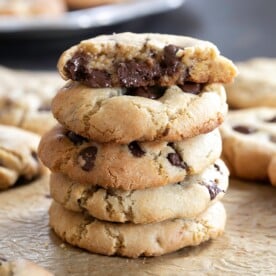
Gluten Free Chocolate Chip Cookies
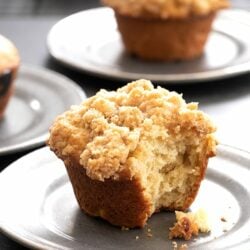
Easy Mix-in Gluten Free Muffins
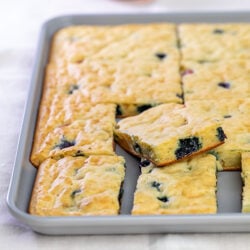
Gluten Free Sheet Pan Pancakes
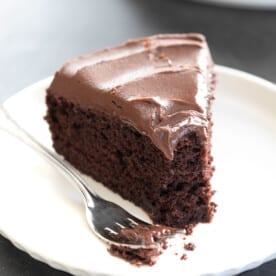
Gluten Free Chocolate Cake
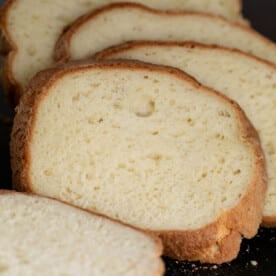
Gluten Free Artisan Bread

Thanks for stopping by!
Hi, I’m Nicole. I create gluten free recipes that really work and taste as good as you remember. No more making separate meals when someone is GF, or buying packaged foods that aren’t good enough to justify the price. At Gluten Free on a Shoestring, “good, for gluten free” just isn’t good enough! Come visit my bio!

